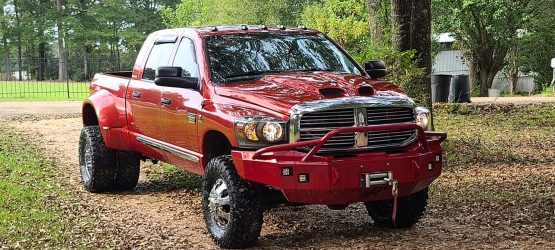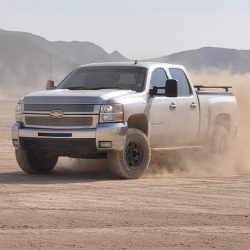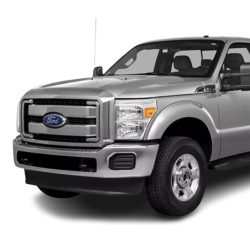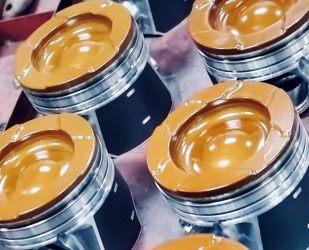First of its Kind: The 7.3L Power Stroke Turbo Diesel
If you ask any truck owner or enthusiast their favorite diesel engine, they would most likely mention the 7.3L Power Stroke Turbo Diesel engine manufactured by Navistar International, a service parts provider of Ford.
The 7.3L was the first of the Power Stroke family of diesel engines specifically designed for Ford trucks. To learn more about the 7.3L, visit Choate Engineering Performance, which is a company known for rebuilding and modifying diesel engines to increase their performance and power.
First introduced in 1994, this iconic and top-performing diesel engine was the first of its kind with its hydraulic electronic unit injector (HUEI), waste-gate turbocharger, direct injection or DI system, and air-to-air intercooler.
At the time, the 7.3L Power Stroke had the cleanest emissions among diesel engine models thanks to its HEUI system, which is also responsible for its impressive horsepower and torque figures.
For years, Ford trucks dominated the market thanks to its 7.3L Power Stroke, a piece of invention that has revolutionized the diesel engine industry.
Nearly 30 years after the diesel engine was introduced in the market, and with about two million units manufactured, you can still see a number of Ford trucks from 1994 to 2003 still up and running, with some of them even having over 400,000 miles on the odometer.
7.3L Power Stroke Turbo Diesel’s Predecessors
In 1982, Ford signed a joint venture with International Truck and Engine Corporation (ITEC), which was later on renamed Navistar, to develop a diesel engine line for the automobile manufacturer’s Super Duty pickups.
The joint venture led to the creation of the 6.9L indirect injection (IDI) engine, which is known for its modest capability–170 horsepower and 315 foot-pounds of torque. Over the years, Navistar continuously refined this engine for Ford Super Duty Trucks manufactured between 1988 and 1993.
But after years of subsequent improvements, in 1994, Navistar came up with a completely new engine they called the 7.3L Power Stroke, which Ford decided to commission to replace the 7.3L IDI.
Unlike its predecessors, the 7.3L has these additional features: high-pressure oil pump or HPOP, low-pressure lift pump, and HEUI. As a result, it has better performance and power, lower emissions, greater fuel efficiency, and better control over injection events.
7.3L Power Stroke Specs
Production: Mid-1994 to 2003
Bore: 4.11 inches
Stroke: 4.18 inches
Displacement: 444 ci (cubic inches)
Compression Ratio: 17.5:1
B10 Life: 200,000 miles (~320,000 km)
B50 Life: 350,000 miles (~560,000 km)
Block: Cast-iron
Rods: Forged-steel (from mid-’94 to 2000) or powdered metal (2001 to 2003)
Pistons: Cast-aluminum
Heads: Cast-iron with six head bolts per cylinder (with sharing)
Valvetrain: OHV, two valves per cylinder, single cam, hydraulic lifter
Injection System: Hydraulic electronic unit injection (HEUI), direct injection
Injectors: HEUI (under valve cover)
High-Pressure Oil Pump: Bosch 15-degree (from mid-’94 to ’99), Bosch 17 degrees (from mid-’99 to 2003)
Turbocharger: Garrett TP38 fixed geometry (from mid-’94 to 1999), Garrett GTP38 (from mid-’99 to 2003)
Intercooler: Air-to-air (from 1999 to 2003)
Peak Horsepower: 210hp at 3,000 rpm (initial release in mid-’94) to 275hp at 2,800 rpm (2003)
Peak Torque: 425 lb-ft at 2,000 rpm (initial release in mid-’94) to 525 lb-ft at 1,600 rpm (2003)
Which vehicles are ideal for the 7.3L Power Stroke Diesel Engine?
The diesel engine’s impressive horsepower and torque figures make it ideal for work and utility vehicles, especially if they involve carrying and pulling heavy loads (e.g., farm trucks and construction vehicles). Furthermore, its improved fuel supply pressure means less emissions, more savings and better performance.
Another appeal of the 7.3L is that it’s easy to service and maintain.
Thanks to the diesel engine’s durable design, it can also last up to a million miles (or sometimes even more) when it’s properly and regularly maintained.
7.3L Power Stroke’s Successors
In 2003, Navistar stopped manufacturing the 7.3L and replaced it with the cleaner, greener 6.0L Power Stroke to meet the new emissions standards for diesel engines. Nonetheless, the iconic 7.3L remains popular among truck enthusiasts because of its durability, reliability and performance.
The 7.3L’s Power Stroke successors:
The 6.0L Power Stroke Diesel Engine
The 6.0L Power Stroke is a bit smaller than the 7.3L. But what it lacks in size, it makes up for a significant increase in torque and horsepower and lower emissions, thanks to its new exhaust gas recirculation system and next-Gen fuel injection system.
The 6.4L Power Stroke Diesel Engine
In 2007, the 6.4L Power Stroke engine was introduced in the market. Equipped with newer technologies, including twin turbochargers and high-pressure, common-rail fuel injection with piezoelectric fuel injectors, it has 350 horsepower at 3000 RPM and a peak torque output of 650 foot-pounds at just 2000 RPM.
The 6.7L Power Stroke Diesel Engine
In 2011, Ford built a new diesel engine from scratch– the 6.7L Power Stroke, which was the most advanced diesel engine at the time.
Lighter, more powerful, and more fuel-efficient than other diesel engines, the 6.7L has “Instant Start” glow plugs for quicker starts in cold weather, lightweight compacted graphite iron engine block, aluminum cylinder heads, and piston-cooling jets for a longer engine life.
7.3L Power Stroke modifications and their benefits
While Navistar ceased the production of the 7.3L Power Stroke in 2003, it hasn’t stopped many truck enthusiasts from appreciating this durable and reliable diesel engine. In fact, some have even modified it, thanks to diesel rebuild kits and individual enhancements such as injection system improvements, turbocharger adjustments, etc.
One of the most popular modifications involves the Street Series Turbocharger, which involves a quick installation; this particular enhancement adds up to +13 horsepower and a maximum gain of +28 foot-pounds of torque, according to in-house testing results.
Other common modifications:
- Hybrid injectors
- Custom powertrain control or PCM module
A Final Word on the 7.3L Power Stroke Turbo Diesel
Many trucking enthusiasts continue to appreciate the durability, reliability and performance of the motor diesel 7.3 Power Stroke. Fortunately, rebuilding and modifying this iconic diesel engine is cost-effective and practical when you work with Choate Engineering Performance.
At Choate Engineering Performance, we rebuild quality diesel engines to improve their performance and longevity. To learn more about how you can modify your motor diesel 7.3 Power Stroke, call us at (901) 553-9847 or visit our website.






Hello! we would be happy to help you with that. The cost will vary depending on the build. If you could call us at 901-553-9847 we will be happy to build you a custom quote!